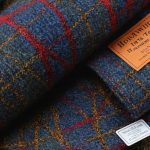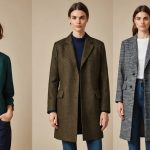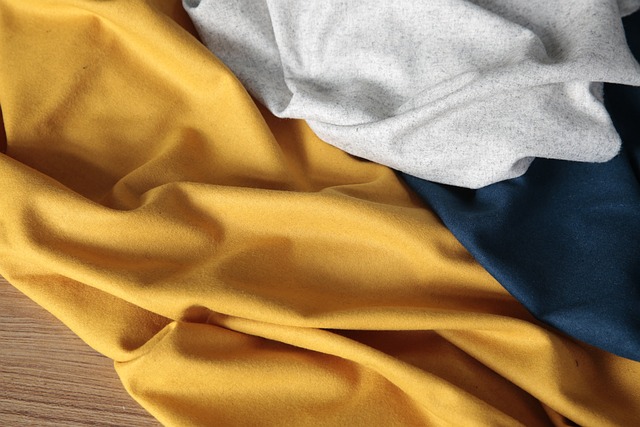As we continue to witness climatic changes and environmental degradation, sustainability is no longer just an option – it’s an imperative. One of the areas where your choices can make a significant impact is fashion. By choosing sustainable fabrics for your clothes, you can contribute to a greener future without compromising your style. This article will guide you through the key aspects of sustainable fabric selection.
Why Shift to Sustainable Fabrics?
Before we delve into how to choose sustainable fabrics, it’s important to understand the reasons behind the shift towards a more eco-friendly approach in the world of fashion. Traditional fabrics like conventional cotton and synthetic materials have been associated with high levels of water pollution, waste production, and carbon emissions.
Also read : What’s the Secret to Pulling Off Bold Print Mixing in Your UK Fashion Ensemble?
While you might think your clothing choices have minimal impact on the world, a quick Google search will reveal otherwise. The fashion industry is one of the greatest polluters globally. Conventional fabric production processes are intensive in terms of energy, water, and chemicals used. Moreover, the rate at which we discard used clothes is alarming.
Switching to sustainable fabrics can help reduce these environmental footprints. Eco-friendly materials use less water and energy in their production, generate less waste, and are often biodegradable or recyclable. Also, many of these fabrics are made from organic or recycled materials, contributing to the circular economy.
Also read : What Are the Best Outerwear Pieces for Tackling the Unpredictable UK Showers?
Identifying Sustainable Fabrics
When you’re shopping for clothes, it’s crucial to read the labels to know what kind of fabric you’re buying. Look out for words like ‘organic’, ‘recycled’, or ‘eco-friendly’. If you’re shopping online, this information will usually be listed in the product description.
Organic Cotton
One of the most popular sustainable fabrics is organic cotton. Unlike conventional cotton, organic cotton is grown without the use of harmful pesticides and chemicals. It’s also often grown in a way that conserves water and promotes biodiversity.
However, not all ‘organic cotton’ is created equal. To ensure your clothes are truly environmentally friendly, look for certifications like the Global Organic Textile Standard (GOTS) or the Organic Content Standard (OCS).
Recycled Materials
Many eco-friendly brands are now using recycled materials to make their clothes. For instance, recycled polyester is made from discarded plastic bottles, while recycled cotton is derived from pre- or post-consumer waste.
While it’s true that recycled materials still require energy to be processed, the total environmental footprint is much smaller compared to producing new materials. Plus, by supporting brands that use recycled materials, you’re helping to divert waste away from landfills.
Eco-Leather
If you’re a fan of leather, consider switching to eco-leather, which is made from plant-based or recycled materials. It’s a great alternative to conventional leather, which is associated with environmental and animal welfare issues.
Choosing the Right Brand
While the type of fabric is crucial, it’s also important to consider the brand’s overall sustainability efforts. Many fashion brands have made commitments to reduce their environmental impact, through measures such as water conservation, carbon neutrality, and zero-waste production.
When exploring different brands, consider their transparency. Brands that are truly committed to sustainability will usually be open about their production processes, suppliers, and environmental footprint. They may also hold certifications from reputable third-party organizations, such as the B Corporation or the Fair Wear Foundation.
The Power of Your Choices
Ultimately, the power to shape the fashion industry lies in your hands. By choosing sustainable fabrics and supporting eco-friendly brands, you’re voting with your wallet for a more sustainable future. And remember, every little action counts. Whether it’s choosing organic cotton t-shirts or recycled jeans, these choices will contribute to a greener wardrobe and a healthier planet.
While it may seem daunting at first, with a little knowledge and research, you’ll soon be able to navigate the world of sustainable fabrics with ease. And as you walk down the streets in your eco-friendly clothes, you’ll not only look good but also feel good knowing that you’re doing your part to save the environment.
The Importance of the Manufacturing Process in Sustainable Fashion
In addition to the fabric, another key aspect of sustainable fashion is the manufacturing process. This includes every step from the sourcing of raw materials to the final assembly of your clothes. It’s critical to keep in mind that even if a garment is made from sustainable fabric, it might still have a significant environmental impact if the manufacturing process is not eco-friendly.
This could involve excessive water use, carbon emissions, or waste production. For instance, dyeing is a common process in the fashion industry that can be extremely polluting, resulting in the release of harmful substances into water bodies. To combat this, some brands are moving towards environmentally friendly dyes and closed-loop systems, where water is recycled and reused.
Moreover, the manufacturing process also encompasses the working conditions of the workers. Ethical brands ensure that workers are paid fair wages and work in safe conditions. Certifications like the Fair Trade Certified or the OEKO-TEX can provide assurance that both environmental standards and workers’ rights are maintained.
Exploring Alternatives to Conventional Fabrics
Beyond organic cotton and recycled materials, there are several other sustainable fabrics to consider for your wardrobe. Many of these are innovative materials developed in response to the environmental crisis posed by the fashion industry.
One such fabric is Tencel, a type of rayon that’s made from sustainably sourced wood pulp using a closed-loop process. It’s soft, breathable, and biodegradable, making it a great alternative to synthetic fabrics. Look for Tencel garments that are certified by the Forest Stewardship Council (FSC) to ensure that the wood is sourced from responsibly managed forests.
Another fabric to consider is hemp. It’s one of the most sustainable crops as it grows quickly, requires little water, and naturally repels pests, eliminating the need for pesticides. Hemp fabric is durable, breathable, and gets softer with each wash.
In your quest to build a sustainable wardrobe, it’s essential to explore these various fabric options and choose the ones that align with your style and values.
Conclusion: Embrace Your Role in Shaping Sustainable Fashion
As consumers, we have the power to drive the shift towards more sustainable practices in the fashion industry. Recognizing this influence and acting upon it can make a significant difference. By selecting sustainable fabrics and supporting brands committed to environmentally friendly manufacturing processes, we are investing in a more sustainable future.
Remember, sustainable fashion isn’t just about the environment. It’s also about creating a fairer fashion industry where human rights are respected. By choosing ethical brands, we promote fair wages and decent working conditions.
While transitioning to a sustainable wardrobe can feel overwhelming, it’s important to know that every small step counts. Even a single purchase of organic cotton or recycled cotton can contribute towards a significant change. And as more people join in, this collective effort can bring about a wave of transformation in the fashion industry.
So, let’s embrace our role as eco-conscious consumers and make sustainable fashion the norm. After all, looking good doesn’t have to cost the earth.











